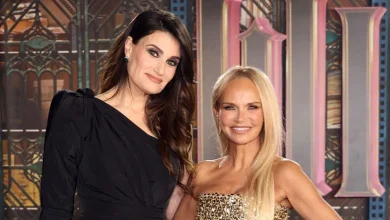Is It Marriage…And Other Worrying Questions

“He’s gay. She’s straight. They’re happily married,” reads the title of a recent Washington Post article, discussing a couple who has been in a monogamous relationship for almost ten years. “A new crop of couples are making content about their mixed-orientation marriages, divorced from sexual attraction but not love,” the article stated. Partners Samantha Wynn Greenstone and Jacob Hoff are not alone. The WaPo also highlighted April Lexi Lee and Renee Wong as married “aromantic” best friends. The former pair was said to be “happily celibate for years,” the latter “solo poly,” which means having multiple intimate relationships while living an independent lifestyle.
These people are impressively adept at crafting curated social media content aimed at normalizing and celebrating their behavior. Indeed, Greenstone, who with Hoff has turned their relationship into a profitable career, says that some of their most supportive online commenters are actually conservative. “If anything, I think we are taking the sanctity of marriage to a whole new level,” she declares.
However, this representation is not entirely true: Greenstone is pregnant with Hoff’s baby. “We birds’d and we bees’d,” explained Greenstone, which provokes a few questions I don’t really want answered. But one less scandalizing question worth asking is what exactly we should call a committed relationship in which one party claims to be gay but engages in heterosexual intercourse resulting in the conception of a child—is that ever actually a marriage?
Orthodox. Faithful. Free.
Sign up to get Crisis articles delivered to your inbox daily
Given certain conditions, it seems at least possible that such a scenario could be a marriage. Though we have no evidence to suggest Greenstone and Hoff are baptized Catholics, if they were, they would certainly be eligible to enter into a legitimate marriage with one another, given the sacrament is reserved for one man and one woman. That the male participating in such a relationship self-identifies as gay would not itself be disqualifying, if he intended to consummate the marriage with the woman via the conjugal act, which in this case it would appear Hoff has done. (The answer to questions of whether or not he intended to consummate the relationship when they entered into it, or that he intended to abstain from gay sex are unknown.)
Granted, such a scenario seems bizarre and absurd, one contemplated to amuse theology students or canon lawyers on a boring Friday evening over cigars and bourbon. Yet the fact that Greenstone and Hoff are calling their relationship a marriage should give us pause. And, perhaps more broadly, these nontraditional scenarios may soon confront Church leaders. Self-described “gay Catholic” author Eve Tushnet, who disapproves of the Catechism referring to homosexuality as disordered, has promoted what she calls celibate “vowed friendships” and “paths of chaste, devoted same-sex love” in committed relationships between gay persons.
This hints at the complex world the Church will confront in the years to come. And it won’t just be people self-identifying as gay wanting to live (or perhaps more accurately claiming to live) in some kind of chaste committed relationship; it will include all manner of curious arrangements that will seek to push long-standing ecclesial-determined boundaries. About 5 percent of the American population is in a consensual nonmonogamous relationship, and a startling 60 percent of Americans are willing to contemplate entering into such a relationship.
Imagine a scenario in which a “throuple” seeks an ecclesial blessing or even a marriage because only one man and one woman in this party of three intend to consummate the marriage. Perhaps the third person stands smiling and content at the wedding as a maid of honor or groomsman—and then goes off with the heterosexual couple on their honeymoon. Of course, the “throuple” wouldn’t be married in the eyes of the Church, but if the third party asserted he or she was not engaged in sexual activity with the other two persons, on what grounds would a priest prevent this social arrangement? Consider: Would a priest have any moral ground to command a newly-married couple that they couldn’t have a close friend live with them? And what if that arrangement simply was or became permanent?
It’s all weird and shocking, I’ll admit. But I think it is a possible, if not likely, challenge for the Church. The broader secular culture is pushing all manner of unusual sexual, romantic, or cohabiting arrangements, and those arrangements are being normalized by prominent Catholic voices, including clerics such as Fr. James Martin and Fr. Bryan Massingale. And anything that is permitted—such as blessings for gay couples—suggests tacit ecclesial approval, as media discussion of the late Pope Francis and now Leo XIV regularly remind us.
The broader secular culture is pushing all manner of unusual sexual, romantic, or cohabiting arrangements, and those arrangements are being normalized by prominent Catholic voices…Tweet This
This is all the more reason why the faithful must combat any messaging that obscures or undermines what the Church has always taught about human sexuality. Pace Tushnet and other “gay Catholics,” it is not just homosexual acts that are disordered but homosexual desires as well. Marriage is between a man and a woman who intend to consummate their marriage and remain open to life, and priests must be wary of and discourage arrangements in which a heterosexual and homosexual person seek to wed in the Church, for to self-identify as irreversibly or incontrovertibly gay is itself contrary to Catholic teaching on the human person.
Through God’s grace, especially communicated via the sacraments, we can not only overcome sinful acts but the very desires that tempt us to commit them. To recontextualize such desires as in any sense good or commendable, as if they are somehow indelibly part of our identity, is to invite our own destruction and be complicit in the destruction of others. “But whoever causes one of these little ones who believe in me to sin, it would be better for him to have a great millstone fastened round his neck and to be drowned in the depth of the sea” (Matthew 18:6).
There is no “sanctity” in committed relationships between homosexuals and heterosexuals, or any other such relational arrangement. They are not, as Greenstone claims, a means of sharing a “spiritual umbilical cord.” They are, rather, confused means of self-indulgence, loosely tethered, if not entirely untethered, from what God intended within the context of marriage. They will inevitably bring harm upon those who participate in them, including, worryingly, the new life Greenstone and Hoff will soon welcome into this world. What, one wonders, will that child’s parents tell him or her about sex, love, and marriage? We should pray for that child, as well as all of those deceived into thinking such relationships properly constitute a true definition of love.




